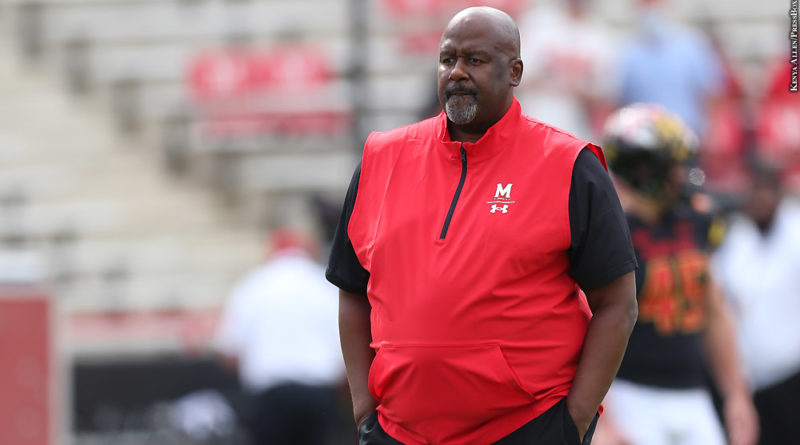College football has undergone sweeping changes in how it operates in recent years, so much so that one particular analogy may be the best way to describe the changes to an audience that may not be as in tune to the happenings as experts and insiders are.
Following a very public war of words between Alabama’s Nick Saban and Texas A&M’s Jimbo Fisher, which started when Saban said Fisher essentially bought his most recent recruiting class that ranked first nationally, debates surrounding NIL and the outlook of the future of college football as we know it have sparked again.
The analogy Maryland’s Michael Locksley likes best to describe the new landscape is a lawless roadway.
“They raised the speed limit on the highway and they took the state troopers off,” Locksley said on Glenn Clark Radio June 1. “And now you’re running into accidents and a bunch of other issues, and now you’re trying to come back and put the state troopers back on but people are still going above the speed limit.”
Around this time last summer, dozens of states began passing their own versions of name, image and likeness laws that allowed college athletes to capitalize off of their notoriety. Maryland passed its law in May 2021, and the NCAA began allowing schools to put their state’s laws into practice on July 1.
Although originally intended to provide an avenue for athletes to earn an income off of their name, it’s quickly spiraled into recruiting incentives and pay-for-play deals that are impossible to pinpoint. That’s how Saban, whom Locksley worked under for three seasons at Alabama, said Fisher reeled in the No. 1 class.
Locksley, entering his fourth season as Maryland’s head coach, recognizes the need for “guardrails” to prevent schools from taking advantage of rules that are more gray than black and white.
“Without the guardrails, as we’ve continued to see, the gap between the haves and the have-nots continue to be created,” he said. “I’ve been on the forefront of NIL … but I do think we need to create a little more equitable guardrails. The only rule for NIL is you can’t use it for recruiting inducements. That’s what I think Coach Saban was trying to make a point of. It’s really no rules, no law within it.”
Locksley isn’t alone in calling for tougher and stricter guidelines to existing laws. Many coaches from prominent programs have similarly urged the NCAA to act.
But Locksley is in a different position than most of his peers. He is in Year 4 of a grueling program rebuild, all while competing in what he says may be the toughest division in the sport. Maryland’s head coach is worried about what the future may hold if clearer rules aren’t passed. The Terps already struggled to keep up with the top teams of the Big Ten East.
“Everyone is trying to figure it out,” Locksley said. “I’m hopeful that the supporters of Maryland football will step up to help us to not have that gap continue to widen for us and to close it. People ask me, ‘Can we become more competitive in the Big Ten?’ and my answer is, ‘Yes, we can. If you want us to be competitive, I’d like to see you come support us to help us.’ Because now we legally can do things to go get really good players that are right here.”
After Maryland claimed its first bowl game win since 2010 with a win against Virginia Tech in the Pinstripe Bowl in January, Locksley’s rebuilding project is trending upward. To reward the head coach, Maryland signed him to a contract extension that will keep him in College Park through 2026.
Coinciding with increased NIL efforts, Locksley can pinpoint another aspect of program building that Maryland must achieve — stability. Since Ralph Freidgen’s departure after the 2010 season, the Terps have had four head coaches in 11 seasons.
Locksley points to other programs at Maryland as examples of continuity. Whether it’s John Tillman for men’s lacrosse, Rob Vaughn for baseball, Missy Meharg for field hockey, Sasho Cirovski for men’s soccer or Cathy Reese for women’s lacrosse, all have coaching stability in common, something football has lacked historically.
“It’s kind of been the Achilles heel of Maryland football,” Locksley said. “Look at what we did this past spring with baseball and lacrosse. … There’s been so much consistency in all these programs. The culture is set. In basketball, you’ve had three head coaches basically over the last 40 years. Since 1985 … it was nine coaches for football. I just don’t see how you can develop consistency in a program when you change at the top so much. Stabilizing Maryland football is all about trying to create a consistent culture.”
For more from Locksley, listen to the full interview here:
Photo Credit: Kenya Allen/PressBox

